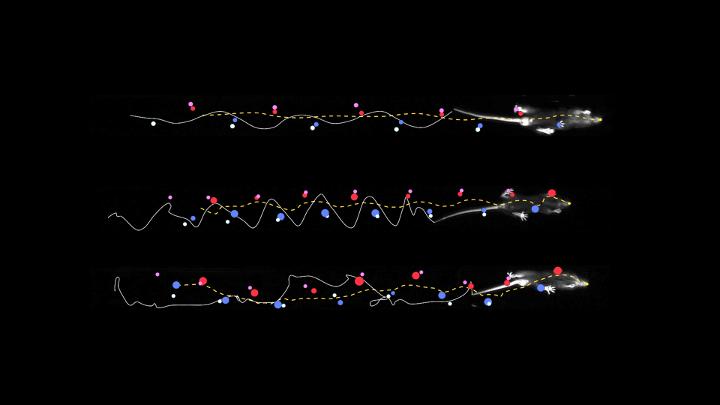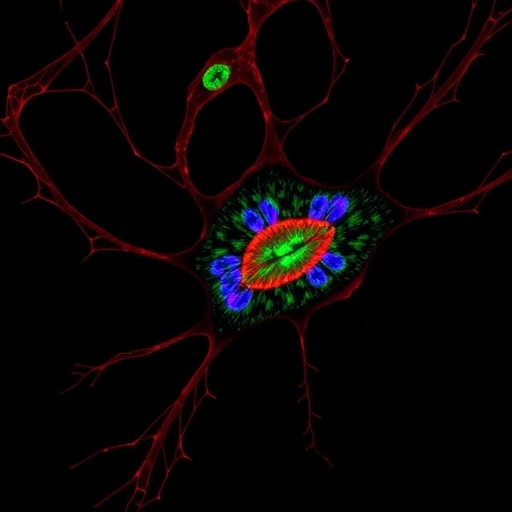
Credit: Megan Carey
Locomotion deficits, such as lack of coordination, a shuffling gait, or loss of balance, can result from neurological conditions, specifically those that affect motor areas of the nervous system. To develop treatments, scientists often turn to animal models of disease. This strategy is crucial not only for designing potential therapies, but also for gaining insight into fundamental questions about the organisation and function of the nervous system.
Until recently, scientists did not have tools to systematically characterise specific walking deficits in different mouse models of neurological conditions. To solve this problem, Megan Carey’s lab, at the Champalimaud Centre for the Unknown in Portugal, developed LocoMouse: an automated movement-tracking system that captures the fine details of locomotion in mice.
“It’s like Tolstoy said”, remarks Carey, “all normal locomotion is alike, but every type of abnormal locomotion has its own neural basis.” In this free-style paraphrasing of Tolstoy’s opening sentence of the novel “Anna Karenina”, she captures the essence of her group’s most recent research project.
In a new study published in the scientific journal eLife, Carey’s team uses LocoMouse to identify highly-detailed “locomotor signatures” for two different mouse models. These signatures effectively capture the full pattern of walking deficits of each mouse. Analysing the relationship between the locomotor signatures and the patterns of affected neural circuitry then provides a roadmap for linking neurological and locomotor deficits.
Linking neurological and locomotor deficits
Two mice walk across a linear path. They walk slowly with heavy and uncertain steps. It’s clear that both mice suffer from motor deficits, but in a somewhat different way which is difficult to pinpoint by eye. What can their unique walking patterns say about the underlying cause?
“We published our initial results with LocoMouse a few years ago, focusing on one mouse model called pcd, which stands for Purkinje Cell Degeneration. These mice lack one of the main cell-types in the cerebellum (Purkinje cells). While the initial results of that study were interesting, we didn’t know how general, or how specific, the pattern of deficits would turn out to be,” Carey explains.
“Both pcd and reeler have inherited genetic mutations that affect a brain area called the cerebellum”, says Ana Machado, a lead author of the study. “The cerebellum is important for coordinated movement and for normal walking across species.”
Whereas the neural damage in pcd mice is restricted to the cerebellum, reeler mice have altered development and circuitry throughout the brain. “The locomotor behaviour of reeler and pcd mice is clearly different, reeler being more severely affected. Still, the locomotion deficits of both models appear broadly ‘cerebellar’ to a trained eye. We asked ourselves: ‘can we quantitatively capture shared and specific features of locomotion in these mice?’,” Machado recounts.
The answer was “yes.” The researchers found remarkably similar impairments in how movement was coordinated across the limbs and body. Their tail movements were also affected. Typically, mice control their tail to ensure overall stability, but both pcd and reeler are unable to do that. As a result, their tails passively oscillate as a consequence of their limb movement. “We think this shared pattern of deficits reflects core features of cerebellar damage,” says Carey.
In addition to the shared features, the team also identified specific walking deficits that were unique to reeler mice. “Movement variability was overall much higher in these mice. Also, they support their body weight with their front, rather than hind, limbs. As a consequence, they can’t use them for steering, which results in an unstable trajectory”, Machado explains. The researchers attribute these additional impairments to differences in brain circuitry both in the cerebellum and across the brain.
A roadmap for studying locomotor deficits
“When we began studying neural circuits for locomotion, there was always a tradeoff between specificity and interpretability of behavioral measurements,” Carey recalls. “With LocoMouse, we have tried to provide both a comprehensive, quantitative description of locomotor behaviour as well as a conceptual framework within which to interpret that high-dimensional data.”
“Now, we have a new roadmap that will allow us to move beyond these two mouse models and study many more,” says Carey. “We have a quantitative way to map huge high-dimensional sets of behavioural data onto the intricacies of the underlying neural circuits. This approach can be extended to many more mouse models, with different manipulations of various brain areas and cell types,” she concludes.
Video: https:/
###
Media Contact
Afonso Vaz Pinto
[email protected]
Original Source
http://magazine.
Related Journal Article
http://dx.




